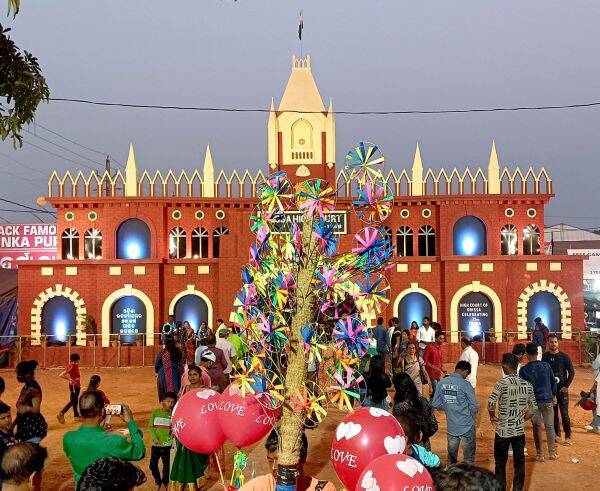Live Classes

During the G20 Summit, PM Modi mentioned Baliyatra, literally ‘voyage to Bali’, one of the country’s largest open-air fairs that commemorates the 2,000-year-old maritime and cultural links between ancient Kalinga and Southeast Asia.
In his address to the Indian diaspora in Bali on the sidelines of the G20 summit, Prime Minister Narendra Modi mentioned the annual Baliyatra on the banks of the Mahanadi in Cuttack, which celebrates the ancient trade relations between India and Indonesia.
This year’s Baliyatra, which concluded on Thursday, also found a place in the Guinness World Records for achieving an impressive feat of origami, the creation of beautiful paper sculptures.
Baliyatra, literally ‘voyage to Bali’, is one of the country’s largest open-air fairs, which is organised every year to commemorate the 2,000-year-old maritime and cultural links between ancient Kalinga (today’s Odisha) and Bali and other South and Southeast Asian regions like Java, Sumatra, Borneo, Burma (Myanmar) and Ceylon (Sri Lanka).
The origins of the festival, which begins on Kartik Purnima (full moon night in the month of Kartik) can be traced back more than 1,000 years. The Bay of Bengal region had several ports, and sadhavas (traders) traditionally began their voyage across the sea on this auspicious day, when the winds were favourable for the boats, known as boita, to sail.
According to historians, popular items of trade between Kalinga and Southeast Asia included pepper, cinnamon, cardamom, silk, camphor, gold, and jewellery.
Even today, thousands of people across Odisha sail decorative miniature boats made of banana stems, paper, or thermocol to celebrate boita bandana, or the worshipping of the boats.
The festival is organised by the Cuttack district administration and Cuttack Municipal Corporation in association with several other government agencies. Lakhs of people from Cuttack and neighbouring districts throng the fair site by the Mahanadi through the nine-day festival.
Besides the cultural and historical aspects, Baliyatra has an important commercial dimension. It is a time when people purchase everything from automobiles and electronic devices to local artisanal products at prices that are comparatively low. The district administration allots more than 1,500 stalls to traders through an auction, and the fair is estimated to see business worth more than Rs 100 crore over its nine days.
In October, a delegation of ambassadors and heads of missions in India of ASEAN countries visited Odisha to explore business opportunities. During a business summit, Chief Minister Naveen Patnaik spoke of Odisha being a “gateway to the ASEAN region”.
Bigger after pandemic
Massive arrangements were made for this year’s Baliyatra after the Covid-induced disruptions in 2020 and 2021. The festival, which is usually held in a 35-acre area, sprawled over 85 acres this year. People come to relish a range of foods and cultural evenings see performances from folk dancers as well as classical artists and celebrities, even as swings, Ram Dolis, and the sounds of toy trumpets lend the fair a rustic charm.
At a special event organised at the Barabati Stadium this year, over 2,100 students made over 22,000 paper boats at a single venue in 35 minutes, an achievement that was recognised by Guinness, and achieved the objective of getting global attention for the festival.
BALIYATRA
GS Paper -1 (Art and Culture)
Download pdf to Read More